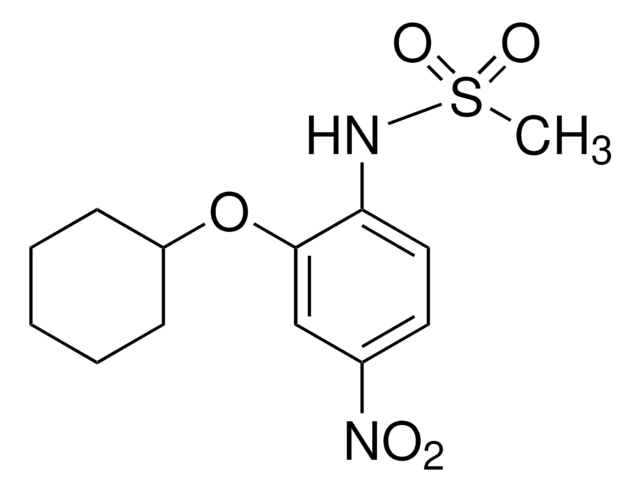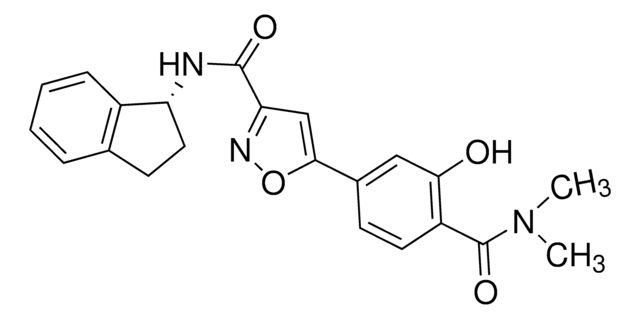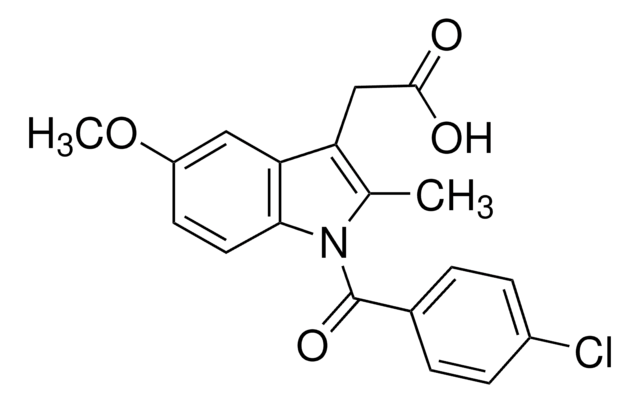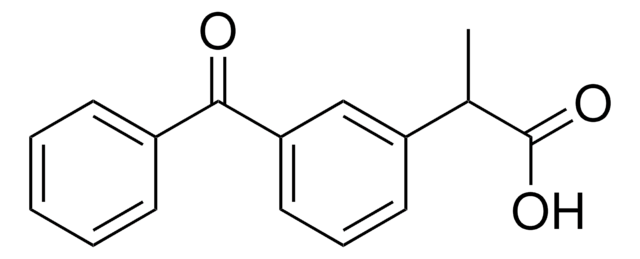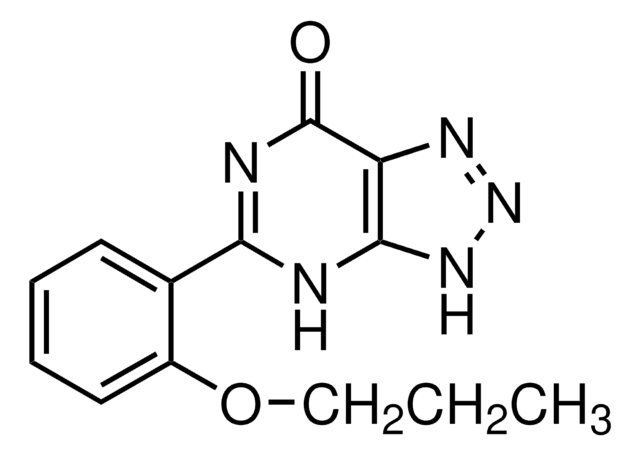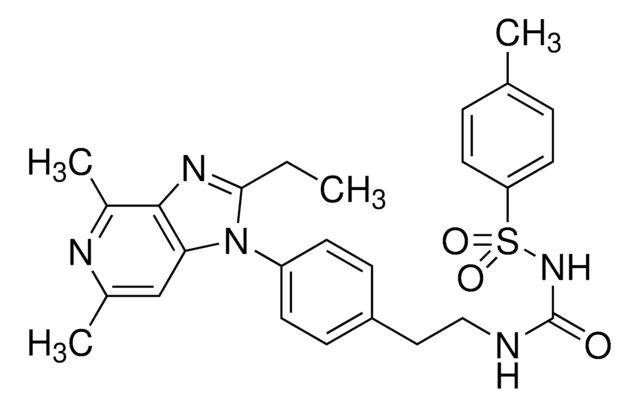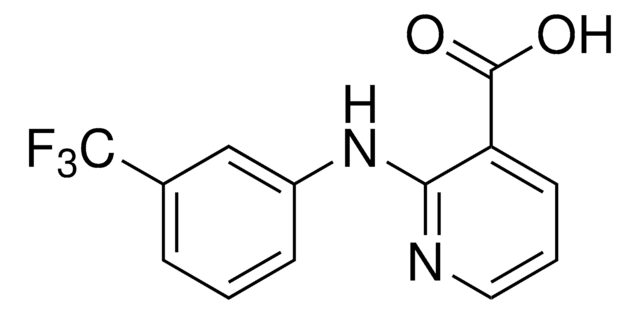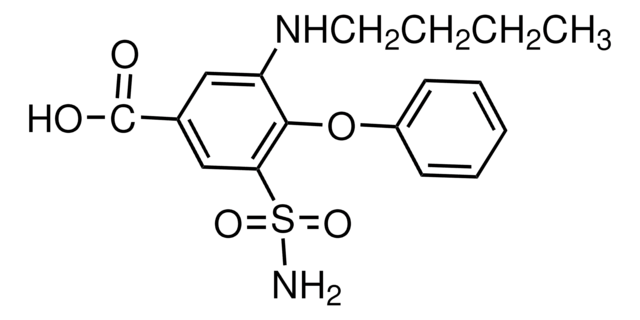S3065
SC 19220
≥98% (HPLC), solid
Sinonimo/i:
2-Acetylhydrazide 10(11H)-carboxylic acid, 8-Chloro-dibenz[b,f][1,4]oxazepine-10(11H)-carboxylic acid
About This Item
Prodotti consigliati
Livello qualitativo
Saggio
≥98% (HPLC)
Stato
solid
Colore
white
Punto di fusione
190-191 °C (lit.)
Solubilità
DMSO: soluble 10 mg/mL
H2O: insoluble
Stringa SMILE
CC(=O)NNC(=O)N1Cc2ccccc2Oc3ccc(Cl)cc13
InChI
1S/C16H14ClN3O3/c1-10(21)18-19-16(22)20-9-11-4-2-3-5-14(11)23-15-7-6-12(17)8-13(15)20/h2-8H,9H2,1H3,(H,18,21)(H,19,22)
KNURFLJTOUGOOQ-UHFFFAOYSA-N
Informazioni sul gene
human ... PTGER1(5731)
rat ... Ptger1(25637)
Applicazioni
Azioni biochim/fisiol
Codice della classe di stoccaggio
11 - Combustible Solids
Classe di pericolosità dell'acqua (WGK)
WGK 3
Punto d’infiammabilità (°F)
Not applicable
Punto d’infiammabilità (°C)
Not applicable
Dispositivi di protezione individuale
Eyeshields, Gloves, type N95 (US)
Scegli una delle versioni più recenti:
Possiedi già questo prodotto?
I documenti relativi ai prodotti acquistati recentemente sono disponibili nell’Archivio dei documenti.
Il team dei nostri ricercatori vanta grande esperienza in tutte le aree della ricerca quali Life Science, scienza dei materiali, sintesi chimica, cromatografia, discipline analitiche, ecc..
Contatta l'Assistenza Tecnica.